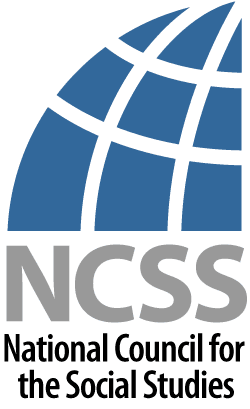
Juliana Barr (NHC Fellow, 2018–19; Associate Professor of History, Department of History, Duke University)
February 16, 2023
Advisor: Jessica Odom, NHC Teacher Advisory Council

Why is it that we in the United States still have the notion that as soon as Europeans put their first big toes on some American coast, all the Americas became up for grabs—denying Indigenous sovereignty, control of the land, and basic home field advantage? Why do we still have an image in our minds that Indigenous people existed in tiny pockets spread sparsely through a landscape still waiting to be “settled”? Much of why we do so is because the maps in US history textbooks tell us so. Those maps tell us that the North American landscape was empty, or that even when “peopled,” those people had no named towns, no charted roads, no territorial markers and, most importantly, no sovereign borders. And, the maps tell us that as soon as Europeans arrived, even those tiny pockets vanished from the earth. Such distortions are at odds with the history itself…and with historical maps drawn by Europeans. This seminar will help educators address the problem of textbook maps in the classroom, and ways to use historical maps to their advantage—making maps talking points and powerful visual aids for understanding the presence and power of Indigenous nations and people throughout North American history as well as for understanding the unique status and rising influence of Native nations today.
Webinar Resources
Before the live webinar please be sure to review the available materials in the webinar resource folder. Use the code provided in your registration email to access these resources.
- Barr, Juliana. “Borders and Borderlands.” In Why You Can’t Teach United States History without American Indians, edited by Susan Sleeper-Smith, Juliana Barr, Jean M. O’Brien, Nancy Shoemaker, and Scott Manning Stevens, 9–25. Chapel Hill: The University of North Carolina Press, 2015.
- Jortner, Adam. “The Empty Continent: Cartography, Pedagogy, and Native American History.” In Why You Can’t Teach United States History without American Indians, edited by Susan Sleeper-Smith, Juliana Barr, Jean M. O’Brien, Nancy Shoemaker, and Scott Manning Stevens, 71–86. Chapel Hill: The University of North Carolina Press, 2015.
Subjects
History / American History / Indigenous American History / Maps / Cartography / Pedagogy / Curriculum /
Rights
cc-by-nc-nd